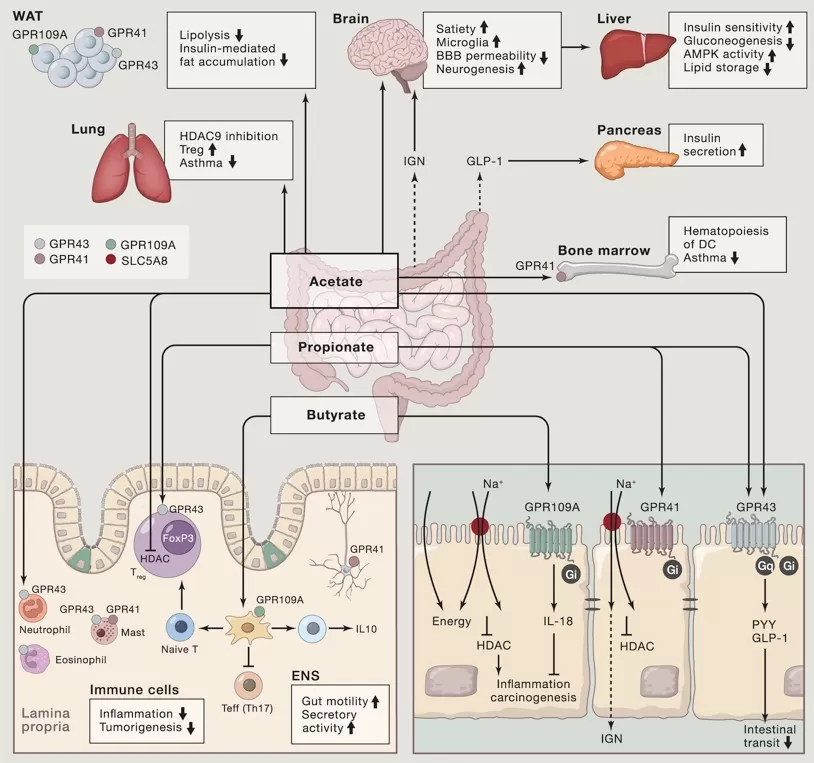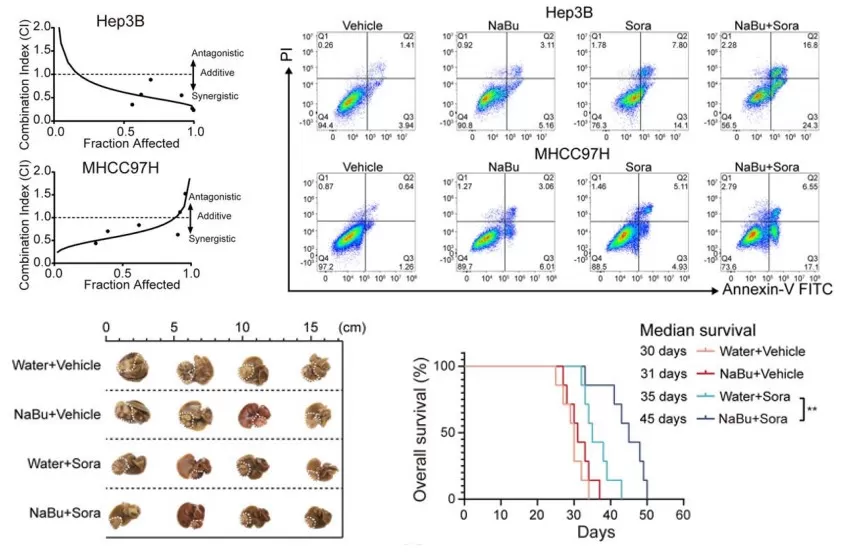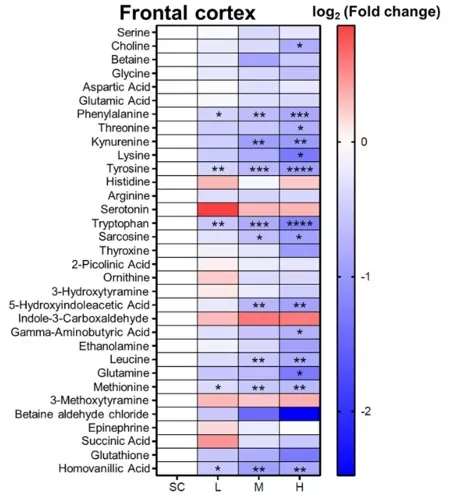Short-Chain Fatty Acids: Gut Health, Metabolism, and Research Applications
What Are Short-Chain Fatty Acids (SCFAs)?
Short-chain fatty acids (SCFAs) are a class of fatty acids with fewer than six carbon atoms, including acetic acid (C2, acetate), propionic acid (C3, propionate), and butyric acid (C4, butyrate). These molecules are primarily produced in the human gut through microbial fermentation of dietary fibers that reach the colon undigested. Although small in size, SCFAs serve critical functions far beyond energy supply — acting as signaling molecules, immune regulators, and metabolic modulators.
In a healthy gut, approximately 50–100 mmol of SCFAs are generated daily, with acetate being the most abundant, followed by propionate and butyrate. SCFAs are rapidly absorbed in the colon, where butyrate is mostly used locally by colonocytes, while acetate and propionate enter systemic circulation to reach the liver, adipose tissue, brain, and beyond. Their versatile biological roles have placed SCFAs at the center of microbiome research, linking dietary fiber, gut bacteria, and host health in a single metabolic axis.
How SCFAs Are Produced in the Gut
SCFAs are synthesized in the colon via bacterial fermentation of non-digestible dietary fibers, such as resistant starch, inulin, pectin, and oligosaccharides. Human enzymes cannot break down these complex carbohydrates, but anaerobic gut microbes — particularly Faecalibacterium prausnitzii, Roseburia spp., and Eubacterium rectale — possess the necessary enzymes to convert them into SCFAs. This microbial cross-feeding results in a rich mix of acetate, propionate, and butyrate, which play distinct roles in host physiology.
Production efficiency and SCFA composition are influenced by diet, microbiome composition, and colonic transit time. For instance, high-fiber diets typically increase butyrate levels, while high-protein diets may reduce SCFA output or shift proportions unfavorably. SCFAs are rapidly absorbed by intestinal epithelial cells, or transported into the bloodstream via monocarboxylate transporters (MCTs), influencing metabolic activity far beyond the gut.

SCFA Production Pathway from Dietary Fiber by Gut Microbiota
Key Types of SCFAs: Acetate, Propionate, and Butyrate
Among all short-chain fatty acids, acetate (C2), propionate (C3), and butyrate (C4) are the most abundant and biologically significant. Together, they account for over 95% of SCFAs in the human gut, and each plays distinct roles in metabolic and immune regulation. Acetate is the most prevalent SCFA and serves as a precursor for cholesterol and lipid synthesis; it can also cross the blood-brain barrier and participate in central appetite regulation. Propionate primarily acts in the liver where it contributes to gluconeogenesis and stimulates gut hormones like PYY and GLP-1, which help regulate hunger and insulin sensitivity. Butyrate, on the other hand, is the preferred fuel for colonocytes and is essential for maintaining gut barrier integrity and modulating inflammation via HDAC inhibition and Treg activation.
These three SCFAs differ not only in carbon chain length but also in their microbial origin, systemic distribution, and target tissues. The table below summarizes their primary producers, biological functions, and action sites:
|
SCFA |
Major Producers |
Main Functions |
Target Organs/Tissues |
|
Acetate |
Bacteroides, Prevotella |
Lipogenesis, cholesterol synthesis, appetite regulation |
Liver, brain, peripheral tissues |
|
Propionate |
Veillonella, Bacteroides |
Gluconeogenesis, PYY/GLP-1 secretion, immune modulation |
Liver, gut, immune cells |
|
Faecalibacterium, Roseburia |
Colonocyte energy, barrier integrity, HDAC inhibition |
Colon epithelium, immune system |
SCFA Functions in Metabolism and Gut Health
Short-chain fatty acids are central to gut and systemic metabolism. Butyrate fuels colonocytes — the epithelial cells lining the colon — by entering the tricarboxylic acid (TCA) cycle, supporting cellular turnover and intestinal barrier integrity. This process reduces intestinal permeability (“leaky gut”) and enhances protection against pathogens. Acetate and propionate, on the other hand, are transported to the liver and peripheral organs, where they contribute to cholesterol metabolism, glucose homeostasis, and appetite regulation.
A landmark study by our client (Hepatology, 2023) demonstrated the power of butyrate in regulating metabolic homeostasis during cancer treatment. The researchers used MetwareBio’s targeted SCFA panel to profile gut-derived metabolites in hepatocellular carcinoma (HCC) patients and found significantly lower circulating butyrate levels. Supplementation with butyrate restored gut barrier function, reduced oxidative stress in tumor cells, and enhanced chemotherapy efficacy. This highlights the role of SCFAs not just in gut maintenance but also in systemic anti-cancer metabolism.

Butyrate Sorafenib HCC Treatment
Another study (Frontiers in Microbiology, 2021) examined gut SCFAs in children with new-onset type 1 diabetes, showing impaired butyrate production linked to inflammation and glucose dysregulation. SCFAs, especially propionate, were found to influence hormone release (GLP-1, PYY) and insulin sensitivity, underscoring their relevance in metabolic disease prevention and early-stage diagnosis.
SCFA and the Gut-Brain Axis
Short-chain fatty acids (SCFAs), particularly acetate, propionate, and butyrate, are now recognized as vital mediators of communication between the gut and the brain—a relationship known as the gut-brain axis. These microbial metabolites influence brain function both directly, by crossing the blood-brain barrier (especially acetate), and indirectly, via immune and hormonal pathways.
Among them, butyrate stands out for its neuroprotective effects. As an HDAC inhibitor, butyrate can enhance the expression of brain-derived neurotrophic factor (BDNF), a molecule crucial for memory formation, synaptic plasticity, and neuroregeneration. Animal studies have demonstrated that butyrate supplementation alleviates anxiety-like behaviors, improves cognitive performance, and modulates neuroinflammation.
Case Study Highlight
In the study “Inhalation of diesel exhaust particulate matter induces locomotor hyperactivity and its relationship with brain and gut metabolism”, researchers investigated the neurobehavioral impact of air pollution exposure. Using MetwareBio’s targeted SCFA panel, they found that altered gut SCFA profiles—particularly reduced butyrate—correlated with disrupted brain metabolism and increased locomotor hyperactivity in exposed animals. This underscores the metabolic link between gut microbes, SCFA production, and neurological behavior under environmental stressors.

SCFAs and neurotransmitter changes after DEP exposure
SCFA vs Long-Chain Fatty Acids: What’s the Difference?
Short-chain fatty acids (SCFAs) and long-chain fatty acids (LCFAs) differ not only in their structure, but also in their metabolic roles, sources, and biological effects. SCFAs—such as acetate (C2), propionate (C3), and butyrate (C4)—are primarily microbial metabolites produced from dietary fiber fermentation in the colon. In contrast, LCFAs (typically C12–C22) like palmitic acid and oleic acid are derived from dietary fats and absorbed in the small intestine.
While SCFAs are readily absorbed into the portal circulation and act as local fuels and signaling molecules, LCFAs require bile emulsification, form chylomicrons, and enter systemic circulation via the lymphatic system. Functionally, SCFAs regulate immune response, gut health, and epigenetic gene expression, whereas LCFAs are involved in lipid storage, membrane composition, and systemic energy metabolism.
Understanding these differences is essential for interpreting metabolic phenotypes, especially in multi-omics studies. For example, reduced SCFAs may reflect dysbiosis, while LCFA shifts may indicate altered lipid metabolism or dietary imbalance. MetwareBio offers complementary panels to quantify both SCFAs and long-chain fatty acids across sample types.
Comparison of SCFA and LCFA in terms of origin, metabolism, and function.
|
Feature |
Short-Chain Fatty Acids (SCFAs) |
Long-Chain Fatty Acids (LCFAs) |
|
Carbon Chain Length |
< C6 (e.g., C2–C5) |
≥ C12 (e.g., C16–C22) |
|
Examples |
Acetate (C2), Propionate (C3), Butyrate (C4) |
Palmitic acid (C16:0), Oleic acid (C18:1), Arachidonic acid (C20:4) |
|
Primary Origin |
Fermentation of dietary fiber by gut microbiota |
Dietary fats (meat, oils, dairy) |
|
Site of Production/Absorption |
Colon (produced by microbes, absorbed in portal vein) |
Small intestine (absorbed into lymph via chylomicrons) |
|
Metabolic Role |
Energy for colonocytes, immune modulation, epigenetic signaling |
Energy storage, membrane structure, eicosanoid synthesis |
|
Signaling Function |
GPR41, GPR43, GPR109A activation, HDAC inhibition |
PPAR activation, lipid mediators synthesis |
|
Health Implications |
Anti-inflammatory, gut barrier integrity, insulin sensitivity regulation |
Associated with obesity, cardiovascular disease, or inflammation (type-dependent) |
|
Representative Applications |
Gut-brain axis, metabolic disease, cancer immunotherapy |
Lipidomics, nutritional research, cardiovascular/metabolic studies |
MetwareBio’s Metabolomics Approach to SCFAs
MetwareBio empowers researchers to explore the role of short-chain fatty acids through precise, multi-platform metabolomics. Our targeted SCFA panel enables absolute quantification of 11 SCFAs using GC-MS, while global metabolomics and lipidomics provide systemic insights into fatty acid metabolism. Combined with microbiome and transcriptomics profiling, we offer integrated solutions to uncover how SCFAs link diet, microbes, and disease. Connect us to accelerate your next breakthrough.
Read more
- What are Free Fatty Acids: Properties, Sources, and Significance
- Types of Fatty Acids: Classification, Functions & Role in Disease
- Saturated Fatty Acids: Health Effects, Dietary Sources, and SCFA Insights
References
Louis P, Flint HJ. Formation of propionate and butyrate by the human colonic microbiota. Environ Microbiol. 2017;19(1):29-41. doi:10.1111/1462-2920.13589
Koh A, De Vadder F, Kovatcheva-Datchary P, Bäckhed F. From Dietary Fiber to Host Physiology: Short-Chain Fatty Acids as Key Bacterial Metabolites. Cell. 2016;165(6):1332-1345. doi:10.1016/j.cell.2016.05.041
Silva YP, Bernardi A, Frozza RL. The Role of Short-Chain Fatty Acids From Gut Microbiota in Gut-Brain Communication. Front Endocrinol (Lausanne). 2020;11:25. Published 2020 Jan 31. doi:10.3389/fendo.2020.00025
Liu H, Wang G, Zhang J, Lu B, Li D, Chen J. Inhalation of diesel exhaust particulate matter induces locomotor hyperactivity and its relationship with brain and gut metabolism. Environ Int. 2024;183:108359. doi:10.1016/j.envint.2023.108359
Che Y, Chen G, Guo Q, Duan Y, Feng H, Xia Q. Gut microbial metabolite butyrate improves anticancer therapy by regulating intracellular calcium homeostasis. Hepatology. 2023;78(1):88-102. doi:10.1097/HEP.0000000000000047
Zhang F, Wan Y, Zuo T, et al. Prolonged Impairment of Short-Chain Fatty Acid and L-Isoleucine Biosynthesis in Gut Microbiome in Patients With COVID-19. Gastroenterology. 2022;162(2):548-561.e4. doi:10.1053/j.gastro.2021.10.013
Canfora EE, Jocken JW, Blaak EE. Short-chain fatty acids in control of body weight and insulin sensitivity. Nat Rev Endocrinol. 2015;11(10):577-591. doi:10.1038/nrendo.2015.128
Tan J, McKenzie C, Potamitis M, Thorburn AN, Mackay CR, Macia L. The role of short-chain fatty acids in health and disease. Adv Immunol. 2014;121:91-119. doi:10.1016/B978-0-12-800100-4.00003-9
Next-Generation Omics Solutions:
Proteomics & Metabolomics
Ready to get started? Submit your inquiry or contact us at support-global@metwarebio.com.


